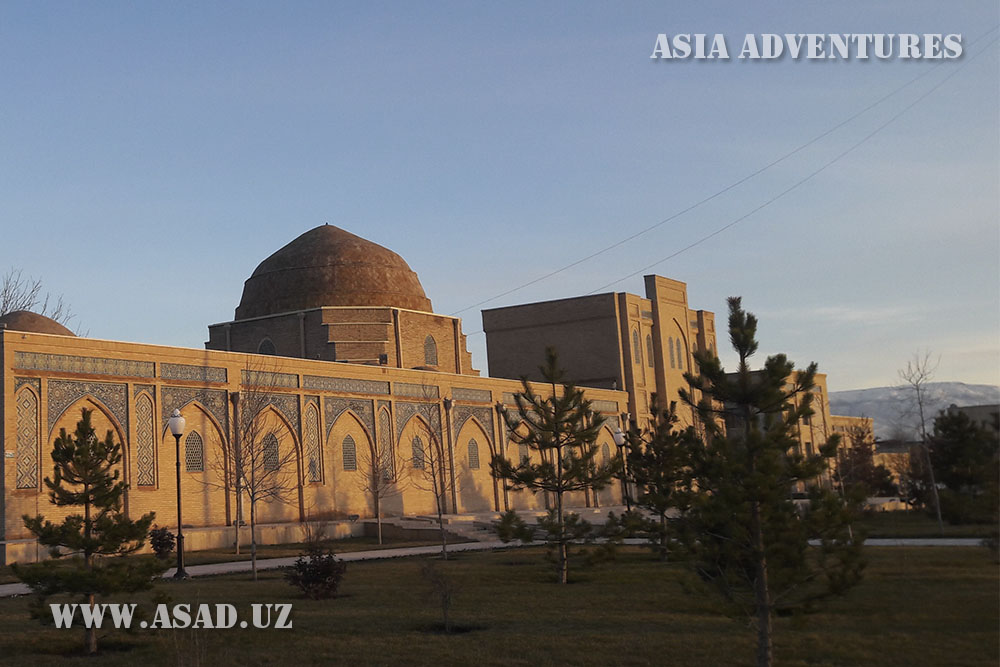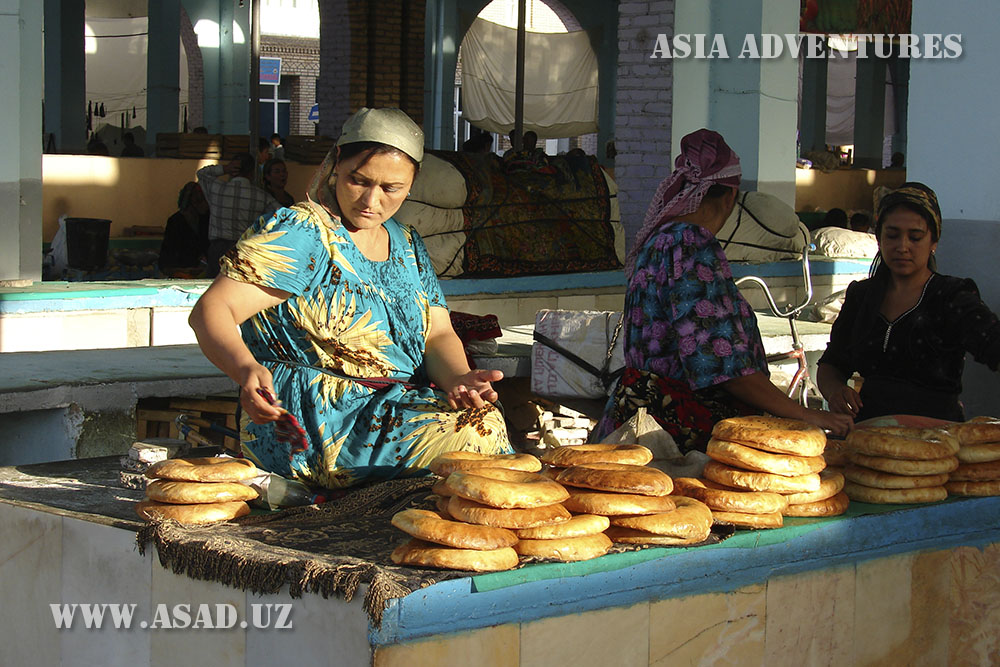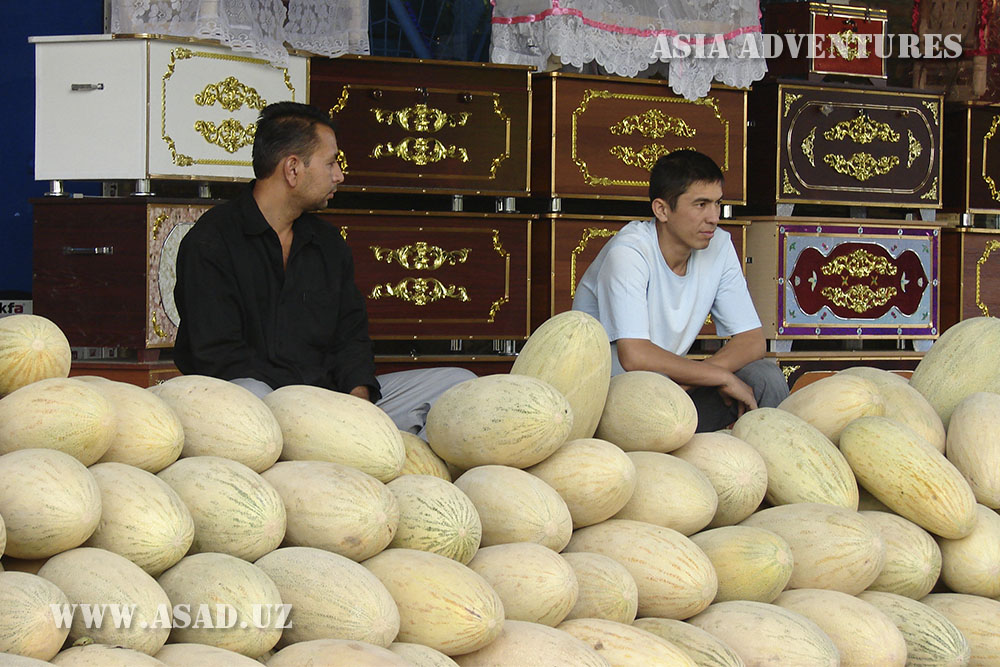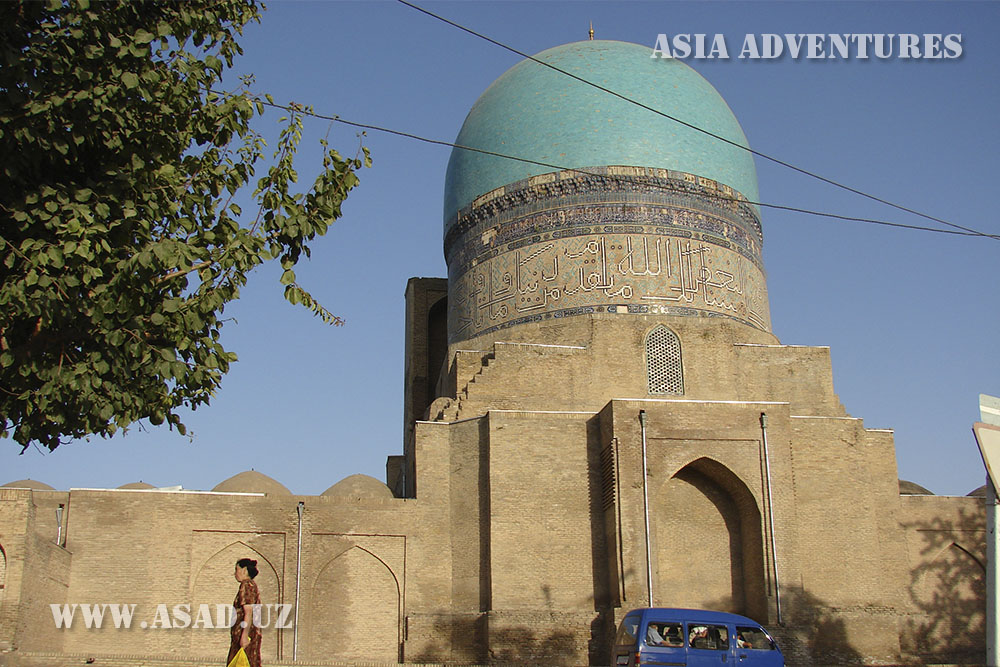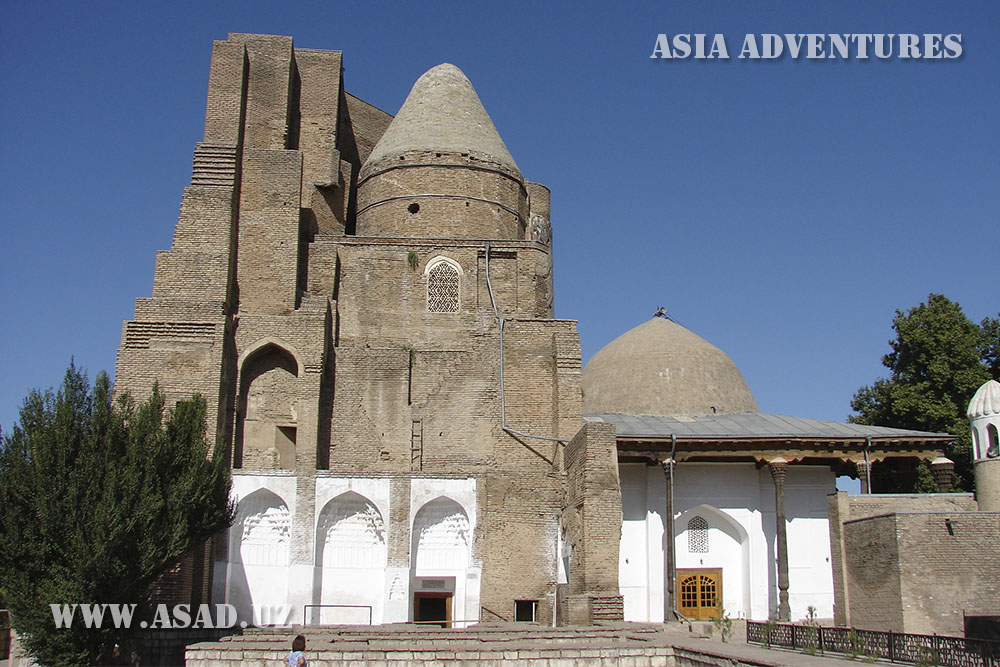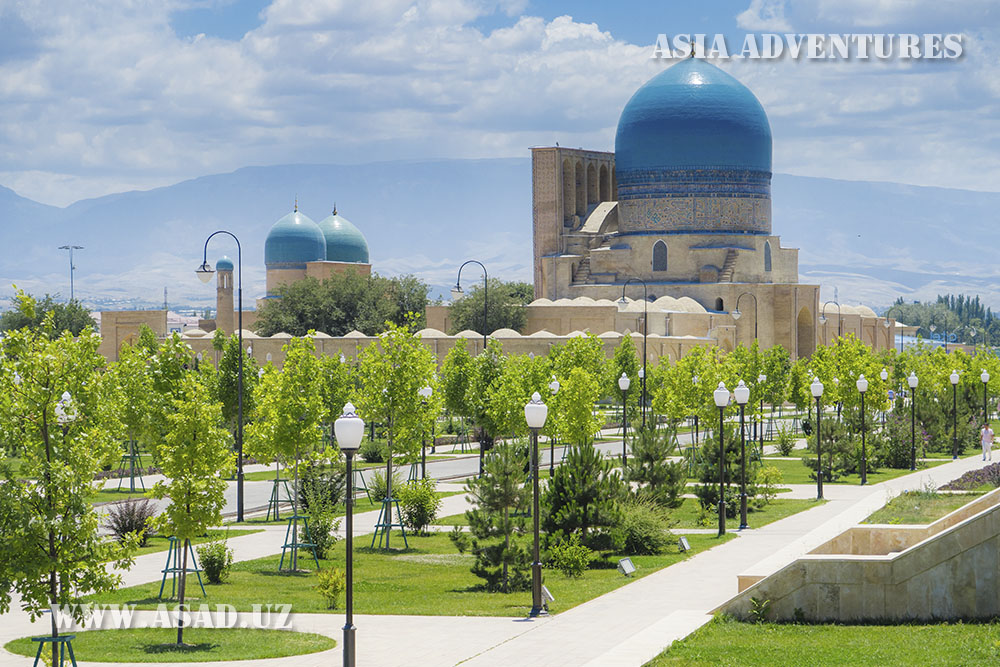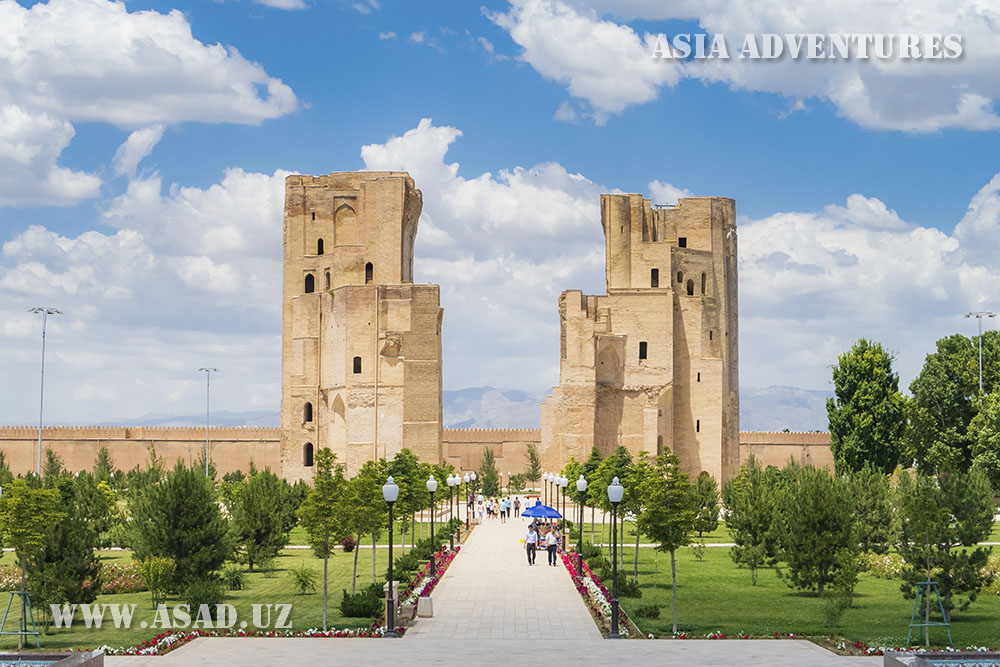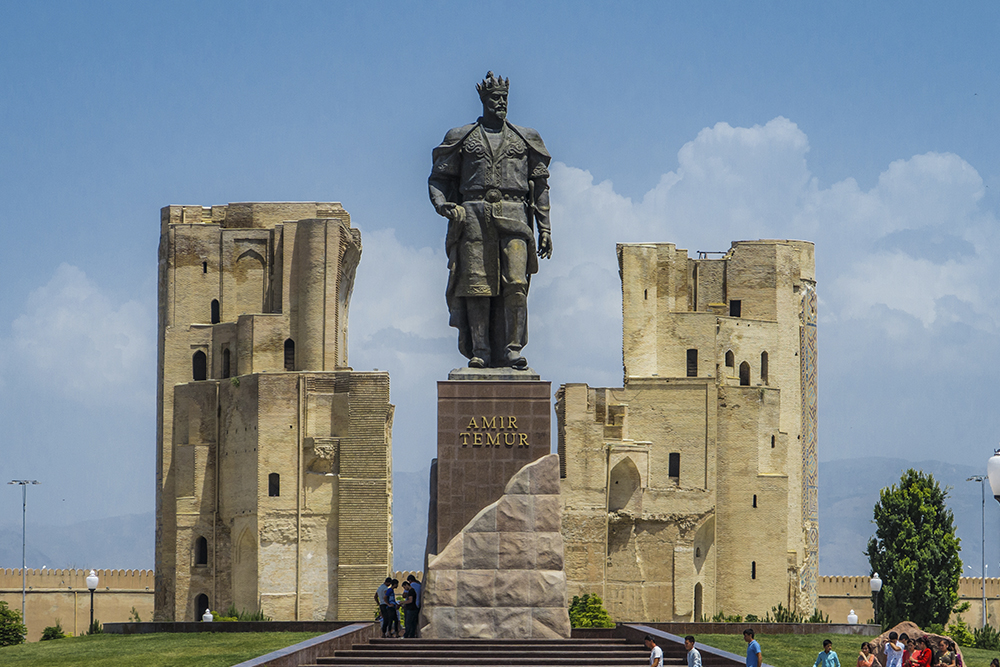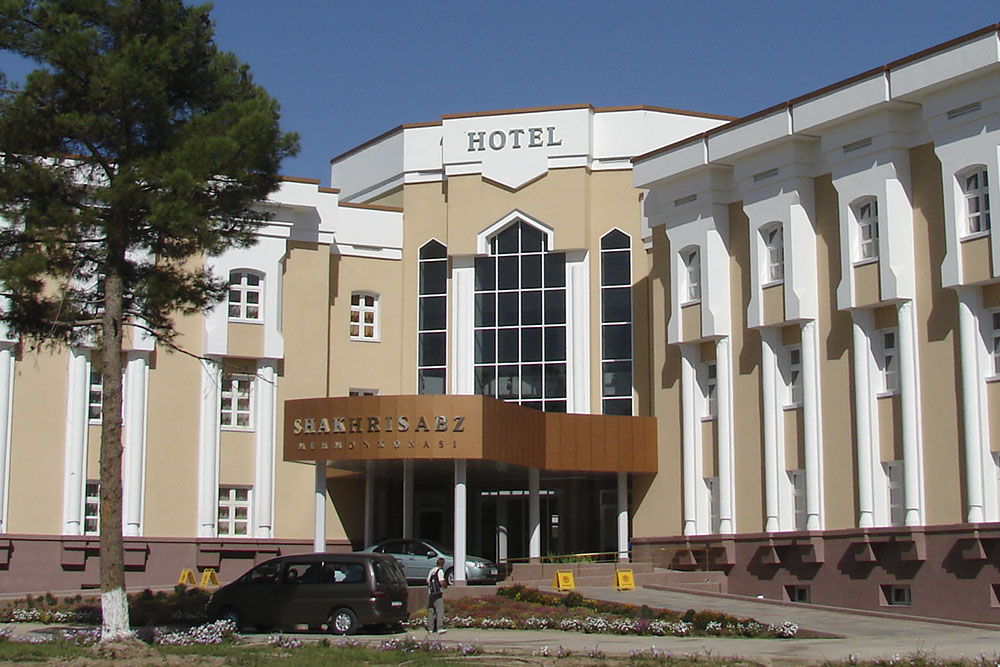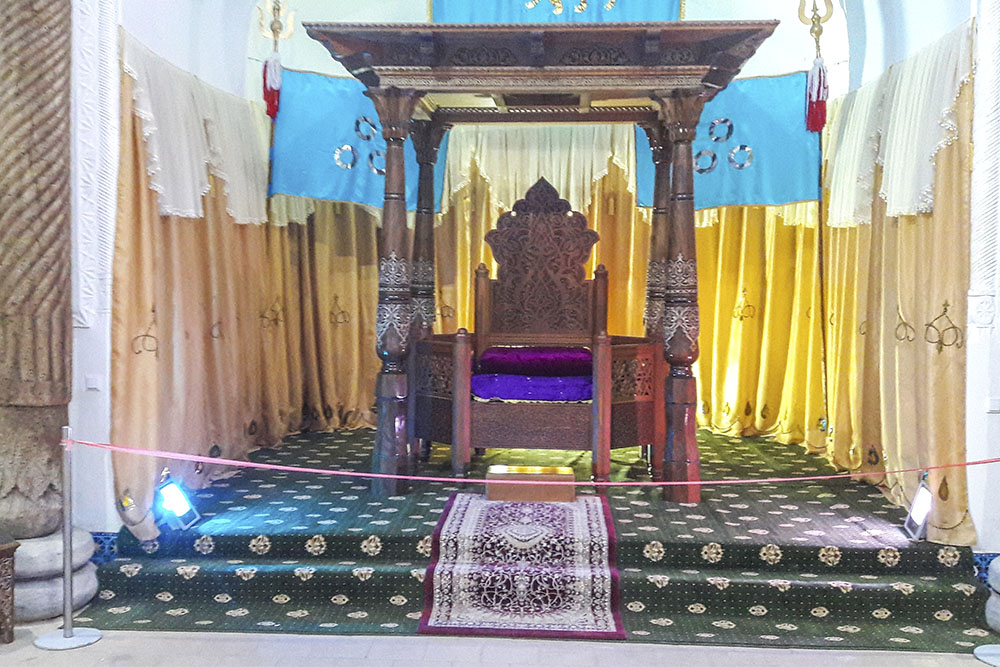Shakhrisabz is a small city (population 90 thousand inhabitants) in the Kashkadarya region of Uzbekistan, nestled at the foothills of the Gissar mountains on the border with the Karshi steppe, 80 km south of Samarkand. Shakhrisabz is world famous as the birthplace of Tamerlane (Amir Temur), the greatest military leader and statesman. Tamerlane made his hometown the second capital of his vast medieval empire in the 14th century. The surviving monuments of that time speak for themselves about the former greatness of the city. No wonder UNESCO in 2000 declared the historical center of Shakhrisabz a masterpiece of world heritage (object No. 885).
Ak-Saray (from Turkic means "beautiful", "clean", "white" palace), built in the late XIV-early XV centuries by order of Amir Temur. Unfortunately, only a small fragment of the eastern wall and dilapidated walls of the entrance portal of the palace, reaching thirty meters into the sky, have survived to this day. Initially, their height was more than seventy meters. The work of the best architects and artisans from all the countries conquered by Tamerlane was used in the construction and decoration of the palace. According to the descriptions of eyewitnesses, a pool was built in the palace at a height of 40 meters. Water was supplied to the pool by gravity from the surrounding mountains and flowed down like a waterfall, creating coolness and a special microclimate of the palace. From the height of the portal, to the top of which there are steps of a steep staircase located inside the tower, a beautiful panorama of the city and a majestic monument to Amir Temur opens up on a spacious and green square in the very center of the city.
In Shakhrisabz, mausoleums have been preserved, in which the ashes of the father and sons of Amir Temur rest. The two burial complexes Dorus-Siyadat and Dorus-Tilyavat are located almost side by side - today there is a green alley between them.
From the Dorus-Siyadat complex, a high mausoleum has been preserved, in which the ashes of the eldest and most beloved son of Amir Temur, Jahangir, who died at the age of 22 in 1376, were buried. The 38-meter pointed dome was covered with golden images and Arabic script with excerpts from the Koran. 18 years later, the second son of Amir Temur, Omarsheikh, was buried here.
Adjacent to the mausoleum is the ancient Hazrat Imam Mosque, built in the early 19th century. And today it gathers numerous believers. The courtyard of the mosque is immersed in the shadow of centuries-old plane trees - the same age as those distant events, carefully preserved during the construction of the mosque.
In the sixties of the twentieth century, a crypt was discovered near the Jahangir mausoleum, which was built for Amir Temur himself. He wanted Dorus-Siyadat to become the family tomb of his family. But fate decreed otherwise. The great commander died far from his native city during the last campaign against China. It happened in the winter of 1405. The ashes of Amir Temur were buried in the tomb of Gur-Emir in Samarkand.
Despite the fact that the will of the Sahibkiran was not fulfilled, the mausoleums of Shakhrisabz nevertheless became the family burial-vaults of the Timurids. The remains of Amir Temur's father, Amir Taragay, who died in 1360, were buried in the Dorus-Tilyavat complex (from Turkic - the House of the Prophet's Descendants). Next to the mausoleum of Amir Taragay is the mausoleum with the ashes of Shamsutdinn Kulyal. The mausoleum was built by Tamerlane on the site of the ancient tomb of Sheikh Shamsutdin Kulyal (who was one of the descendants of the Prophet Muhammad) - the teacher and spiritual mentor of Tamerlane. He owns the prediction of the great future of Temur as the ruler of the “Peace of Allah.”
On the territory of the Dorus-Tilyavat complex there is also a magnificent Kok-Gumbaz (Blue Dome) mosque - built in the first half of the 15th century on an older foundation already during the reign of Amir Temur's grandson - Ulugbek, a famous ruler and astronomer.
By his order, burials of the descendants of the Timurids, as well as famous sheikhs - sages, are built around the mausoleum of Sheikh Kulyal.
In the center of Shakhrisabz rises the trading dome of the ancient Chor-su, which is now used for its intended purpose.
The building of the caravanserai is also interesting, the courtyard of which today is decorated with flowers and juniper bushes.
An evening walk around Shakhrisabz, when the ancient domes and the walls of the Ak-saray Palace, which have preserved fragments of ancient mosaics, soar in the spotlights, as if taking you to the distant Middle Ages. The atmosphere of antiquity makes modern Shakhrisabz mysterious, and the names of world-famous rulers - majesty.




